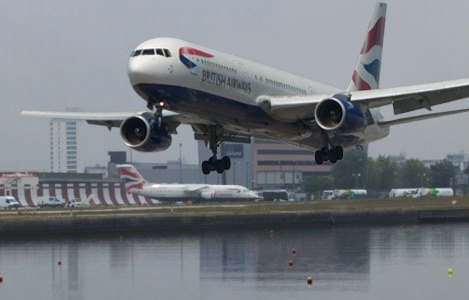There are a lot of myths in UK aviation at the moment – exemplified most recently by the New Economic Foundation’s (NEF) call to close London City Airport (LCY) and use the land for homes and offices. Despite employing 2,000 people (with the potential for this to rise to 3,500) and generating £750 million for the UK economy each year, the NEF claims that the airport “creates little value” and that the passengers who currently use the facility could be equally well served by Heathrow, Gatwick or Stansted.
Ignoring the obligatory bun fight over competing statistics, the NEF’s comments are fundamentally inaccurate. As LCY has pointed out, it is the “only airport in London providing a direct route to the capital's business, financial and political centres, facilitating inward investment and economic growth.” As a result it is popular with business. A quick scan of departure and arrival boards for the airport reveal connectivity with almost every major financial hub in Europe. In addition, the airport is so well-liked that BA recently launched a twice daily business class only flight to the US. Despite having to make a pit-stop in Shannon to refuel (the plane can’t take off from LCY fully loaded as it would not be able to make the steep ascent required by the airport strict environmental guidelines) the load factors (number of people on the plane) of the flights are consistently strong, so much so that BA have given them the old Concorde flight numbers in an added boost to prestige.
On top of this, LCY has one of the most impressive examples of airport best practice going. There are strict curfews on night flights to protect residents, no flights are allowed at weekends and for safety purposes no pilot is allowed to land at the airport unless having made the approach previously as a co-pilot. The airport has a strong level of engagement with local residents, and works hard to minimise the impact of issues such as noise pollution – including schemes such as free noise insulation. For some reason, none of this was shouted from the rooftops following the NEF attack.
The NEF’s report is unfortunately characteristic of a near fifteen year spate of critical comment of the aviation industry by individuals and organisations who don’t understand its operation or the value that it brings. Perhaps the pinnacle of this has been the controversy over the expansion of London capacity – which many have commented is unrequired as regional airports can simply take up the slack.
Aside from the reality that most individuals who want to do business in London are quite keen to fly to London rather than another airport hundreds of miles away, such opposition fails to take into account the importance of connecting hub traffic, or the fact that business people want to fly direct to destinations around the globe rather than sit around waiting for a connection. With its two runways which currently operate at 98% capacity, Heathrow (LHR) simply doesn’t currently have the capability to add more routes and as a result is losing out to European rivals such as Frankfurt (four runways) Paris CDG (four runways) and Amsterdam’s Schiphol (six runways with a few reliefs).
Employees of the Dutch hub, already spend a lot of time at international aviation conferences suggesting that they operate LHR’s third runway and UKPLC can only hope that international businesses are happy to remain in a potentially ex-EU UK, despite the increasing difficulty of global access from London and the marked lack of any political imperative to address this critical issue.
As with most intractable problems there is no silver bullet or single solution to the problems facing London airports and London capacity in general. This is a point that has been recognised for decades by other “global” cities such as New York which operates a system of airports which complement each other and serve different requirements. JFK and Newark mirror LHR and the vastly improved and impressively growing Gatwick, whilst LaGuardia, Stewart and Teterboro serve (sort of) similar roles to the UK’s Stansted, Luton, Biggin Hill and Farnborough.
Such a system could work well for London. Whilst new capacity for Heathrow is a no-brainer if the UK capital wants to maintain its position as a global commercial centre and “world city”, any expansion should by no means work against Gatwick which has a great, now transatlantic offer for its customers and brings vital competition to its larger cousin over to the west. Airports such as Luton and Stansted are similarly a key part of the mix – providing low cost, primarily European point-to-point (i.e. not hub) air travel critical for families and businesses coming out of a recession. Airports such as Biggin Hill also have their role to play – Heathrow hates private planes using up its scarce slots and parking space so why not have a dedicated General Aviation (executive jet) destination?
Whilst the number of people who use London City Airport will continue to be small in comparison to its larger neighbours, we are never going to see an A380 on approach for example, this is not the point. The small, incredibly community conscious airport serves a vital role providing quick, straightforward, popular access (largely through public transportation) to people who want to do business in London’s financial centre or who already live and work in its vicinity. Why on earth would we want to prevent this?






Comments